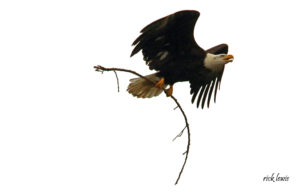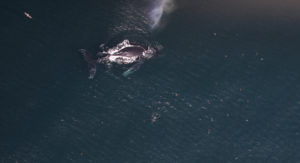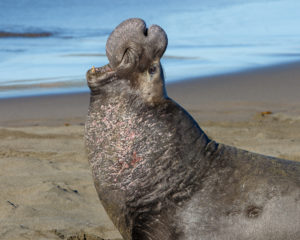As we reported in our July-September 2006 feature The Ups and Downs of Coastal Upwelling, last year’s delayed coastal upwelling event proved catastrophic to animals that depend on this annual cycle of marine nutrients, and indications when we went to press in early June didn’t bode well for this year either, particularly for sensitive species like the Cassin’s auklets that nest on the Farallon Islands and Año Nuevo Island.
The National Oceanic and Atmospheric Administration (NOAA) is now reporting that along the Pacific Coast, the California Current’s jolt of “marine fertilizer” has yet to appear as of late June. The resulting shortage of phytoplankton, krill, and zooplankton carries serious consequences for our off-shore marine seabirds, fish, and mammals. While the effect of weak upwelling on blue whales and humpback whales, which are dependant on krill, is as yet unknown, rockfish counts are way down, and some seabirds are suffering dramatically.
Restoration team at Año Nuevo Island rolls erosion control material made of biodegradable coconut fiber over a layer of plants, seeds, and straw. Photo courtesy Oikonos-Ecosystem Knowledge
The effects of failed upwelling are different for different species. The rhinoceros auklets that breed on the Año Nuevo and Farallon islands (featured in our April-June 2006 feature Squawk of the Auklet: Going Underground on Año Nuevo Island) returned to the island this February and began excavating their underground burrows as usual, suggesting an average year, according to Michelle Hester, president of Oikonos-Ecosystem Knowledge and a research associate with the California Academy of Sciences. Recent vegetation restoration efforts at Año Nuevo have proved successful in stemming erosion and burrow collapses, giving breeding birds a foothold when they need it most. In fact, in the last two seasons fewer than 10 percent of rhino burrows suffered collapses, compared to up to 60 percent in past seasons.
However, for the second year in a row, the relatively new Cassin’s auklet colony on Año Nuevo has completely failed to return this year to breed. Because rhinoceros auklets are more flexible in their diets, eating krill and larval fish as well as larger-sized northern anchovies and Pacific saury, says Hester, they are not as immediately sensitive to the lack of plentiful zooplankton, as are the smaller Cassin’s auklets, which eat only krill and larval fish.
The Farallon Islands, home to the largest seabird nesting colonies in the U.S. outside of Alaska, has been hit hard the past two years by a fall-off in critical summer upwelling currents. Gulf of the Farallones National Marine Sanctuary.
Farther out to sea, similar trends are evident on the Farallon Islands, in the Gulf of the Farallones National Marine Reserve, where Cassin’s auklets have begun abandoning their nests due to the lack of krill, and common murres are having difficulty finding their preferred diet of rockfish. According to Bill Sydeman, director of the Marine Ecology Division at PRBO Conservation Science, the Farallones’ already depleted Cassin’s auklet population has declined from an estimated 100,000 in the early 1970s to as few as 20,000 in 1998. Although not all of the Cassin’s auklets have abandoned their nests yet, “the bottom line will be similar [to last year’s complete failure],” says Sydeman, “They will fail, though we cannot say yet if it will be 100 percent or not.”
While scientists assume that the lack of upwelling is to blame, other factors may be at play in this complex cycle. “Assuming food is the problem,” says Sydeman, “it may be climate (upwelling) driven, or possibly due to competition with other planktivores that are increasing… blue whales, humpback whales, hake, murres.” Looking at the big picture, Sydeman explains the forces at work in this intricately balanced cycle. “Low upwelling may or may not be the culprit. It could be changes in large-scale circulation/currents, changes in salinity/nutrients which, when upwelled result in less production, or changes in timing, amplitude, or duration of upwelling.” In other words, there is a lot that scientists don’t know.
Regardless of root causes, if the food chain is “decoupled” (off-set so that plankton production occurs too early or late), times will be quite hard for species like Cassin’s auklets that are almost entirely dependent on this annual and precisely-timed arrival of food. Timing is everything, and this year might be another instance of too little too late. Even if upwelling returns in July, as was the case last year, only time will tell how and if our marine ecosystem will recuperate.
Further Reading
Sea Life Counts Dive for 2nd Year
by Jane Kay, San Francisco Chronicle; Friday, June 23, 2006
PRBO Conservation Science’s Southeast Farallon Island Research
PRBO staff have conducted research and stewardship activities on the island for over 30 years, studying what they call the “Galapagos of the U.S. West Coast.”

.jpg)




